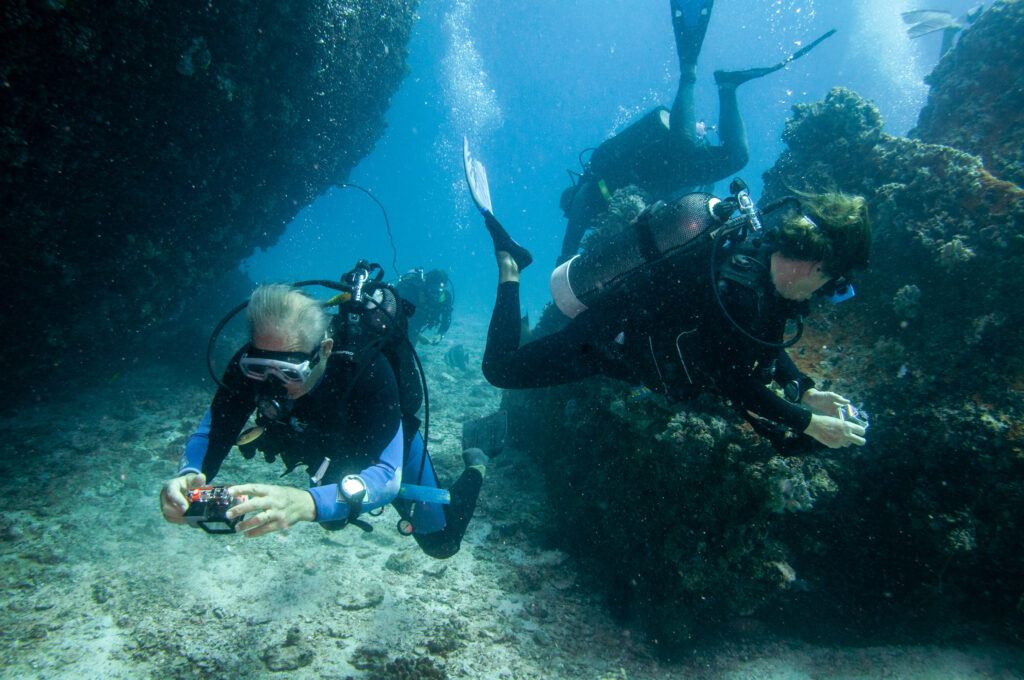What is it to Thumb the Dive?

What is it to Thumb the Dive? “Thumb the Dive” is a scuba diving term that signifies the need to terminate a dive at a point or time other than the initially planned turning point. Divers may use this signal in a variety of situations, most commonly when a diver encounters unexpected or dangerous circumstances […]
What is the measurement Feet of Sea Water?

What is the measurement Feet of Sea Water? Feet of Sea Water (FSW) is a crucial concept for scuba divers to understand in order to safely navigate the underwater environment. As a unit of the Imperial system, FSW is used to measure pressure experienced under water, with 1 FSW representing the pressure in 1 foot […]
What is a Reverse Squeeze?

What is a Reverse Squeeze? A “Reverse Squeeze” is a phenomenon experienced by scuba divers when ascending from a dive, where an inability to release pressure from enclosed spaces in the body results in pain or discomfort. These enclosed spaces typically include the sinuses, the middle ear, and the area inside the diving mask. Underlying […]
What is a Valsalva Maneuver?

What is a Valsalva Maneuver? The Valsalva Maneuver, named after Antonio Maria Valsalva, the 17th-century Italian physician who first described it, is a technique commonly used by scuba divers to equalize middle ear pressure during a dive. This maneuver is vital for maintaining ear health and comfort while diving, as failure to equalize pressure can […]
What is a Toynbee Maneuver?

What is a Toynbee Maneuver? The Toynbee Maneuver is a strategy employed in scuba diving and other activities that involve significant changes in pressure, such as flying or mountain climbing. Named after British physician and researcher Dr. Arnold J. Toynbee, this method is designed to equalize the pressure in the middle ears, an essential procedure […]
What is Barotrauma?

What is Barotrauma? Barotrauma is a crucial topic in the world of scuba diving, as it represents a type of injury that divers may experience due to changes in pressure during their underwater adventures. Scuba divers should be well-informed about barotrauma to avoid potential hazards and to respond effectively in case of an injury. Definition […]
What is Ascent when Diving?

Ascent refers to the upward movement a diver makes as they transition from being submerged underwater to reaching the surface. This process is an essential phase in scuba diving, directly impacting the safety and health of the diver. Ascent is not necessarily a straightforward or continuous journey from depth to the surface; it may require planned pauses, known as decompression stops, to help the body adjust to pressure changes and avoid decompression sickness, a condition commonly called “the bends.” In scuba diving, a controlled and deliberate ascent is crucial to maintaining well-being, preventing injuries, and ensuring a safe return to the surface. This article will explore the importance of ascent, its stages, best practices, and the potential risks divers face during this critical part of the dive.
What is Ambient Pressure in Scuba Diving?

What is Ambient Pressure in Scuba Diving? Ambient pressure plays a critical role in scuba diving and understanding its effects on the human body is essential for divers’ safety and enjoyment. This entry explores the concept of ambient pressure, its sources, implications for dive planning, and how it influences dive physiology and equipment. Ambient pressure […]
What is Alternobaric Vertigo in Scuba Diving?

What is Alternobaric Vertigo in Scuba Diving? Alternobaric vertigo, commonly experienced by scuba divers, is a form of dizziness induced by unequal pressure changes in the middle ear. Though typically mild and short-lived, it can occasionally persist and cause complications if not properly addressed. This entry will explore the causes, symptoms, prevention, and management strategies […]
